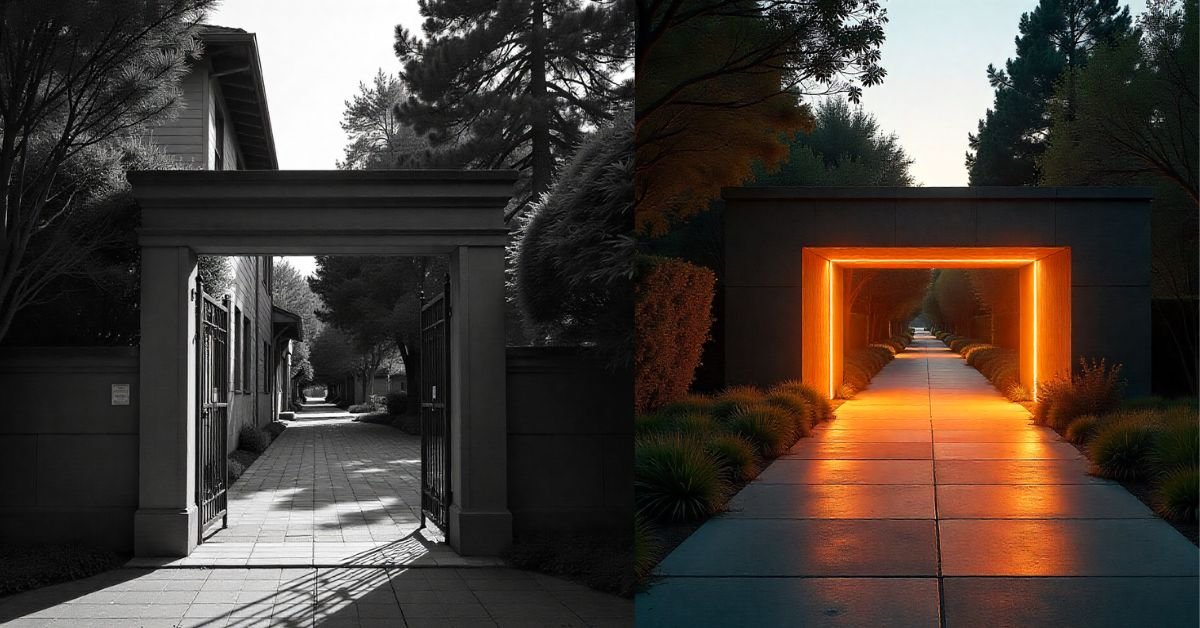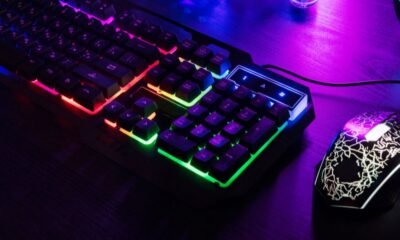TECH
Unveiling the Magic: Why 1 Hacker Way Menlo Park is a Game-Changer

1 Hacker Way Menlo Park It’s more than just a location—it’s a symbol of innovation, disruption, and the digital age. But what’s really behind those iconic gates? Why does this address spark so much curiosity, and what can you actually find at 1 Hacker Way Menlo Park 94025?
Let’s pull back the curtain on this legendary spot in Menlo Park, California. Whether you’re a tech enthusiast, a curious traveler, or someone who’s just seen the address pop up on Instagram, this deep dive will answer all your burning questions—and maybe even inspire your next Silicon Valley adventure.
The Origins of 1 Hacker Way Menlo Park: More Than Just an Address
How Did 1 Hacker Way Menlo Park Become So Iconic?
Back in 2011, Facebook was growing at a breakneck pace. The company needed a new home—one that could house thousands of employees and reflect its hacker-driven culture. Enter the former Sun Microsystems campus at 1 Hacker Way Menlo Park, CA 94025 US.
The name “Hacker Way” wasn’t just a quirky choice. It was a nod to Facebook’s internal motto: “Move fast and break things.” The company wanted to foster a culture where experimentation and innovation were celebrated, not stifled. By renaming the main road through their campus to “Hacker Way,” they made a statement: this was a place where big ideas were born.
“I remember the first time I saw the sign for 1 Hacker Way. It felt like stepping into the future—like anything was possible here.” — A visitor’s tweet
The Transformation of Menlo Park
Before Facebook, Menlo Park was a quiet, leafy suburb nestled between Palo Alto and Redwood City. The arrival of Facebook—and later, Meta—transformed the area into a bustling tech hub. Today, 1 Hacker Way Menlo Park California is synonymous with Silicon Valley’s relentless drive for progress.

What’s Inside 1 Hacker Way Menlo Park 94025? A Peek Behind the Gates
The Campus: A City Within a City
The Meta campus at 1 Hacker Way Menlo Park CA 94025 US is massive. Spanning over 250,000 square feet, it’s more like a mini-city than a traditional office. There are open-plan workspaces, lush gardens, cafes, and even a rooftop park. Employees zip around on bikes, and there’s a constant buzz of activity.
But what really sets it apart? The culture. Every wall, every meeting room, and every common area is designed to spark creativity. You’ll find whiteboards filled with code, art installations, and even a “Hacker Square” where teams gather to brainstorm.
The Famous Sign: A Must-See Photo Op
If you’re in the area, you can’t miss the iconic thumbs-up “Like” sign at the entrance. It’s become a pilgrimage spot for tourists and techies alike. Just check out the hashtag #1HackerWay on Instagram, and you’ll see thousands of photos from visitors around the world.
Security and Privacy: What You Need to Know
While the campus is impressive, it’s not open to the public. Security is tight, and only employees or invited guests can enter. But don’t worry—you can still snap a selfie with the famous sign outside the gates.
1 Hacker Way Menlo Park CA 94025 Instagram: Why It’s a Social Media Hotspot
The Instagram Effect
It’s no surprise that 1 Hacker Way Menlo Park CA 94025 Instagram is a trending search. The address is a magnet for influencers, tech fans, and anyone looking to capture a piece of Silicon Valley magic. The “Like” sign, the sleek architecture, and the sense of history make it a must-visit for your feed.
Real-Life Example: A Visitor’s Experience
A recent visitor shared on Instagram:
“Standing in front of the Facebook sign at 1 Hacker Way Menlo Park felt surreal. It’s where so many world-changing ideas started. Definitely worth the trip!”
Tips for the Perfect Photo
- Go early to avoid crowds.
- Bring a friend for the best angles.
- Tag your location as “1 Hacker Way Menlo Park” for maximum reach.
The Impact of 1 Hacker Way Menlo Park California on Tech and Culture
A Hub for Innovation
Since moving to Menlo Park, Meta has launched countless products from this address—everything from Messenger to Oculus VR. The campus is a hive of activity, with engineers, designers, and visionaries working side by side.
The Ripple Effect on Menlo Park
The presence of Meta has transformed Menlo Park. Property values have soared, new restaurants and shops have opened, and the city has become a magnet for talent from around the world. But it’s not all positive—some locals worry about rising costs and traffic congestion.
Pros and Cons of the Tech Boom
Pros:
- Job creation and economic growth
- World-class amenities and infrastructure
- Global recognition for Menlo Park
Cons:
- Rising housing prices
- Increased traffic and congestion
- Concerns about privacy and data security
1 Hacker Way Menlo Park CA 94025 US: Directions, Parking, and Visiting Tips
How to Get There
1 Hacker Way Menlo Park CA 94025 US is easily accessible by car, bike, or public transit. It’s just off Highway 84, near the Dumbarton Bridge. If you’re coming from San Francisco, it’s about a 40-minute drive (traffic permitting).
Parking
There’s limited street parking near the campus. Most visitors park nearby and walk to the sign for photos. Be respectful of the neighborhood and follow all posted signs.
Can You Tour the Campus?
Unfortunately, public tours aren’t offered. The best you can do is visit the sign, snap some photos, and soak in the atmosphere from outside.
The Future of 1 Hacker Way Menlo Park: What’s Next in 2025 and Beyond?
Meta’s Vision for the Next Decade
Meta isn’t just about social media anymore. The company is investing heavily in the metaverse, AI, and virtual reality. The campus at 1 Hacker Way Menlo Park California is evolving to support these new frontiers, with state-of-the-art labs and creative spaces.
Sustainability Initiatives
In 2025, Meta has doubled down on sustainability. The campus now features solar panels, electric vehicle charging stations, and green roofs. Employees are encouraged to bike or use public transit, and the company has pledged to reach net-zero emissions by 2030.
Community Engagement
Meta has launched several initiatives to give back to Menlo Park, including tech education programs, local grants, and partnerships with schools. The goal? To ensure that the benefits of innovation are shared by everyone.
Real Voices: What People Are Saying About 1 Hacker Way Menlo Park
“I’ve worked at a lot of tech companies, but there’s something special about 1 Hacker Way. The energy, the people, the sense that you’re building the future—it’s electric.” — Meta employee
“Even if you can’t go inside, just being at the gates of 1 Hacker Way Menlo Park is inspiring. It’s like standing at the crossroads of technology and possibility.” — Local resident
FAQs
1. What is the significance of 1 Hacker Way Menlo Park?
1 Hacker Way Menlo Park is the official address of Meta’s global headquarters. It’s a symbol of Silicon Valley’s innovative spirit and the birthplace of many world-changing technologies.
2. Can you visit 1 Hacker Way Menlo Park 94025?
While the campus itself isn’t open to the public, you can visit the famous “Like” sign at the entrance. It’s a popular spot for photos and a must-see for tech fans.
3. Why is it called 1 Hacker Way Menlo Park CA 94025 US?
The name “Hacker Way” reflects Meta’s commitment to a hacker culture—one that values creativity, experimentation, and bold ideas. It’s a nod to the company’s roots and its ongoing mission.
4. Is 1 Hacker Way Menlo Park California the same as Facebook’s headquarters?
Yes, 1 Hacker Way Menlo Park California is the main headquarters for Meta (formerly Facebook). It’s where the company’s top executives, engineers, and designers work.
Conclusion
1 Hacker Way Menlo Park remains a beacon of innovation. It’s more than just an address—it’s a symbol of what’s possible when bold ideas meet relentless execution.Whether you’re snapping a selfie at the sign, following the latest updates on 1 Hacker Way Menlo Park CA 94025 Instagram, or dreaming of launching your own startup, this iconic spot continues to inspire.
TECH
How Brainsclub Fueled Global Credit Card Theft

For cybersecurity researchers, financial fraud investigators, and law enforcement agencies, the word Brainsclub immediately signals one of the largest and most notorious dark web operations of the last decade. For years, it functioned as a carding site, selling millions of stolen credit and debit card records to cybercriminals worldwide. At its peak, Brainsclub was responsible for fueling a huge portion of global payment card fraud, until a 2019 breach exposed 26 million cards and crippled its operations.
This article explains what Brainsclub was, how it operated, why it mattered, and what lessons cybersecurity experts, journalists, and investigators can still learn today.
What Was Brainsclub Dark Web Marketplace?
Brainsclub was a dark web carding community that specialized in selling stolen credit card data, also known as “dumps” or CVV2 information. These details were typically harvested from point-of-sale malware, skimmers, and large-scale data breaches.
- Primary Service: Selling stolen card data to buyers who used it for fraud.
- Scale: Tens of millions of credit and debit cards were listed for sale.
- Impact: It became one of the largest cybercriminal credit card shops online before its takedown.
BriansClub Data Breach Explained
In October 2019, Brainsclub itself was hacked. Cybersecurity journalist Brian Krebs reported that over 26 million stolen credit card records were leaked from the underground marketplace.
- Who hacked Brainsclub? Security experts believe rival cybercriminals or ethical hackers leaked the data.
- What happened to the stolen cards? The leaked card data was shared with law enforcement and financial institutions, helping banks block fraudulent transactions.
- Why does this matter? It marked one of the largest “reverse hacks” of a dark web operation.
According to KrebsOnSecurity, banks and law enforcement used the leaked data to proactively cancel compromised cards, preventing billions in fraud losses.
How Did Brainsclub Work as a Carding Site?
Like other underground stores, Brainsclub operated on hidden servers and required special access through anonymity networks.
Key features included:
- Search Filters: Buyers could search by BIN (Bank Identification Number), card type, country, or expiration date.
- Pricing Model: Cards sold for $10–$50 depending on freshness and type.
- Payment Methods: Transactions were conducted in cryptocurrency.
- Community Features: Brainsclub positioned itself as a dark web carding community, complete with forums and vendor feedback.
| Feature | Details |
|---|---|
| Marketplace Type | Dark web carding site |
| Primary Goods | Stolen credit card data (“dumps,” CVV2) |
| Pricing | $10–$50 per card |
| Payment | Cryptocurrency (BTC, LTC, etc.) |
| Breach | 26 million cards exposed in 201 |
BriansClub Hack Analysis: What Went Wrong
The 2019 hack of Brainsclub raised an important irony: criminals can fall victim to the same vulnerabilities they exploit in others.
Possible reasons for the breach included:
- Weak server security or unpatched software.
- Insider leaks from rival cybercriminals.
- Poor operational security practices.
The Brainsclub hack analysis reinforced that even underground marketplaces need strong cybersecurity—a paradox not lost on investigators.
The Impact of Brainsclub on Banks and Fraud Prevention
The breach provided a rare opportunity for financial institutions to get ahead of fraud.
- Banks: Proactively canceled compromised cards.
- Law Enforcement: Gained insights into the underground economy.
- Cybersecurity Researchers: Used the data to study dark web trends.
According to ReliaQuest, Brainsclub’s downfall demonstrated the scale of the underground carding economy and how targeted disruptions can protect consumers.
Why the Name “Brainsclub”?
Brainsclub was widely believed to have been named after Brian Krebs, the journalist who has exposed countless cybercriminal operations. The naming appears to have been both a taunt and a symbol of notoriety within the underground scene.

Lessons Learned from Brainsclub
- Cybercrime Is a Business: Marketplaces like Brainsclub operated with customer support, pricing, and marketing.
- Security Cuts Both Ways: Even criminals can be hacked.
- Data Sharing Saves Money: Cooperation between banks, law enforcement, and security researchers prevented major fraud losses.
- Awareness Is Key: Investigating the BriansClub data breach highlights why ongoing vigilance in payment systems is crucial.
As Twingate notes, security lapses in underground marketplaces reveal that transparency and cooperation can significantly reduce fraud impact.
FAQs about Brainsclub
What is Brainsclub dark web marketplace?
It was a notorious underground marketplace selling stolen credit card data.
How many credit cards were stolen from Brainsclub?
Over 26 million cards were leaked in the 2019 data breach.
Is Brainsclub still active after the hack?
Most operations collapsed after the breach, though spin-offs may exist.
Who created Brainsclub and why is it named after Brian Krebs?
It’s believed the name referenced journalist Brian Krebs as a taunt.
What impact did Brainsclub breach have on banks?
Banks canceled millions of cards, preventing large-scale fraud.
What tools did Brainsclub use to sell card dumps?
The site used searchable filters, cryptocurrency payments, and underground forums.
Conclusion
The story of Brainsclub remains one of the most striking case studies in cybercrime history. For investigators, journalists, and cybersecurity professionals, it highlights the ongoing arms race between criminals who profit from stolen data and the institutions tasked with stopping them.
By studying Brainsclub’s rise and fall, experts gain insights into how dark web marketplaces operate, why they remain dangerous, and how breaches—even of criminal enterprises—can sometimes benefit the greater good.
TECH
What Is the Windows Security Button? A Complete Guide for Tablet and PC Users

When using certain Windows tablets and 2-in-1 devices, you may have noticed prompts that say: “Press Ctrl+Alt+Delete or use the Windows Security Button.” For many, this can feel confusing, especially if the device doesn’t have a traditional keyboard. The Windows Security Button exists to replicate the same secure login process as pressing the famous Ctrl+Alt+Delete key combination on a regular computer. It ensures safe authentication and quick access to essential system functions, making it a crucial feature in Microsoft’s security ecosystem.

Understanding the Secure Attention Sequence (SAS)
To grasp why this feature exists, we first need to explore the concept of the Secure Attention Sequence (SAS). Introduced in early versions of Windows, SAS is the technical term for pressing Ctrl+Alt+Delete.
The purpose of this sequence is security. It’s a hardware-level command that cannot be intercepted by malicious software. By requiring users to press it before logging in, Windows ensures the login screen is authentic and not a spoof created by malware. This measure prevents password theft and protects user accounts from unauthorized access.
On desktop PCs with physical keyboards, triggering SAS is simple. But on tablets and devices without a keyboard, Microsoft had to introduce an alternative method—the Windows Security Button.
Why Tablets Need a Security Button
Modern computing devices are becoming slimmer, portable, and often designed without permanent keyboards. Tablets, convertibles, and touch-only laptops make portability easier but complicate traditional security controls.
Without a keyboard, pressing Ctrl+Alt+Delete isn’t always possible. To bridge this gap, manufacturers included a dedicated hardware feature or button combination that mimics the Secure Attention Sequence. This replacement makes sure that tablet users enjoy the same protection as desktop users, maintaining consistency across devices.

How the Security Button Works
The security button doesn’t perform any new magic—it simply tells Windows to trigger the same secure action that Ctrl+Alt+Delete would. Once pressed, the device presents the familiar Windows Security screen with options like:
- Lock the computer
- Switch User
- Sign Out
- Change Password
- Open Task Manager
This menu is especially useful in corporate and multi-user environments. For instance, employees can quickly lock their tablet when stepping away, while IT staff can access Task Manager to monitor processes without signing out.
Location and Activation Across Devices
The placement of this button varies depending on the manufacturer.
- Acer tablets often use a special Windows hardware key in combination with the Power button.
- Lenovo ThinkPad and Miix devices typically require pressing the Windows logo key together with the Power button.
- Some Surface models allow users to enable an on-screen equivalent through the ease-of-access settings.
This variability can confuse new users, which is why many system prompts remind you of both options: “Press Ctrl+Alt+Delete or use the Windows Security Button.”
Everyday Scenarios Where It Matters
The importance of this feature goes beyond logging in. Here are practical ways it improves daily computing:
1. Enhanced Security in Public Spaces
If you’re using a tablet in a café or coworking hub, a quick tap of the button lets you lock the screen before walking away. This protects sensitive files from prying eyes.
2. Simplified Multi-User Switching
In households or schools where devices are shared, users can easily switch accounts without restarting. The button provides fast access to the Switch User function.
3. Fast Access to Task Manager
When an application freezes on a tablet without a physical keyboard, opening Task Manager can feel tricky. Using the button provides a straightforward solution without relying on shortcuts.
Windows Security Button vs. Ctrl+Alt+Delete
Both options ultimately serve the same purpose—triggering the Secure Attention Sequence. However, their usage differs depending on the type of device:
| Feature | Ctrl+Alt+Delete | Security Button |
|---|---|---|
| Availability | Requires keyboard | Found on tablets/2-in-1 devices |
| Input Method | Three-key press | Physical button or key combo |
| Functions Provided | Lock, Switch User, Task Manager, etc. | Lock, Switch User, Task Manager, etc. |
| Security Level | Hardware-level | Equivalent, hardware-driven |
This shows that the button isn’t a replacement—it’s simply an adaptation for portable form factors.
Troubleshooting: When the Button Doesn’t Work
Some users report situations where pressing the button doesn’t seem to trigger the Windows Security screen. If this happens, try the following:
- Check Device Manuals – Each manufacturer uses different button combinations. Ensure you’re pressing the correct keys.
- Use On-Screen Alternatives – If hardware input fails, use the on-screen keyboard to press Ctrl+Alt+Delete.
- Update System Drivers – Outdated firmware or system drivers may interfere with hardware functions.
- Fallback Options – In corporate environments, IT admins can disable the requirement for SAS, though this is not recommended for personal security.

Best Practices for Secure Usage
- Always lock your screen when stepping away, especially in shared or professional environments.
- Use the button as a quick gateway to Task Manager instead of forcing a reboot when apps freeze.
- If your device lacks the feature, consider enabling on-screen SAS input in Windows accessibility settings.
- Keep your device updated—security patches ensure the SAS system remains reliable.
FAQs
What exactly does the Windows Security Button do?
It triggers the Secure Attention Sequence, which brings up the Windows Security screen with options like Lock, Switch User, Sign Out, Change Password, and Task Manager.
Where is the Windows Security Button located?
Its location depends on the manufacturer. Some tablets use a combination like the Windows key + Power button, while others may have a dedicated physical key.
Is the button available on all devices?
No. Desktops and laptops with physical keyboards usually rely on Ctrl+Alt+Delete. The button is more common on tablets and hybrid devices.
Can I disable the Secure Attention Sequence requirement?
Yes, system administrators can disable the need for SAS before login, but it reduces security and isn’t recommended for personal use.
What happens if the button doesn’t work?
You can use the on-screen keyboard to press Ctrl+Alt+Delete, check for driver updates, or consult your device manual for the correct key combination.
Why does Windows still require Ctrl+Alt+Delete or its equivalent?
Because it’s a secure, hardware-level signal that prevents malware from creating fake login screens to steal passwords.
Conclusion
The Windows Security Button may seem like a mysterious extra feature at first, but its purpose is clear: to provide tablet and hybrid device users with the same protection and convenience as traditional keyboard shortcuts. By replicating the Secure Attention Sequence, it ensures secure logins, quick access to system management tools, and an easy way to lock or switch users.
TECH
How Camegle Works: Features, Safety, and Privacy

In today’s fast-moving digital world, many people crave real-time conversations with strangers across the globe. Platforms like Omegle made this concept mainstream, but newer alternatives like Camegle have started to gain traction. Whether you’re a curious adult, a casual social chatter, or a parent wondering about online safety, the question remains: What is Camegle, and is it safe to use?
This article breaks down everything you need to know about Camegle online platform—its features, pros and cons, safety tools, and how it compares to Omegle. We’ll also explore whether it’s suitable for teens, what security measures exist, and what makes it different from other random video chat services.
What Is Camegle and How Does It Work?
Camegle is a random video chat platform that connects strangers for live conversations. Like Omegle, it pairs users anonymously, but it introduces additional features designed to make chatting easier and safer.
Key Camegle Features
- Anonymous video chat: No need to share your personal details.
- Built-in translation: Lets you communicate with people worldwide in real time.
- Moderation tools: Helps reduce harassment and inappropriate behavior.
- Chat recording option: Some users may choose to record conversations (with consent).
In essence, Camegle video chat combines social spontaneity with tools aimed at making conversations more accessible across cultures.
Camegle vs Omegle: What’s the Difference?
Many people compare Camegle vs Omegle since both operate in the anonymous chat space. Here’s a quick look:
| Feature | Camegle | Omegle |
|---|---|---|
| Anonymous chat | Yes | Yes |
| Built-in translation | Yes | No |
| Moderation tools | More structured | Limited |
| Chat recording | Possible (with consent) | Not a standard feature |
| Safety focus | Higher emphasis | Often criticized for lack of moderation |
If you’re looking for a random video chat Camegle experience that feels safer and more globally connected, Camegle’s may offer advantages over Omegle.
Camegle Safety: What You Should Know
Is Camegle Safe for Anonymous Video Chats?
Like any online platform, safety depends on how you use it. Camegle safety measures include:
- Reporting and blocking options.
- Moderation tools to filter inappropriate content.
- Anonymous access without linking personal social profiles.
However, no platform is 100% risk-free. Cybersecurity experts, such as the Cybersecurity & Infrastructure Security Agency (CISA), emphasize practicing caution when using anonymous chat services (CISA, 2024).
Camegle Built-In Translation Feature Explained
One standout feature is Camegle’s built-in translation. It enables users to talk across language barriers, automatically translating text or captions in real time.
How to Use Camegle Translation Feature
- Start a chat session.
- Enable the “translation” option in settings.
- Choose your preferred language.
- Chat normally—Camegle’s translates incoming messages for you.
This makes the platform more inclusive compared to Omegle and similar apps.
Recording Chats and Privacy Concerns
Can I Record My Camegle Chats?
Yes, Camegle record chat functionality exists, but ethical and legal considerations apply. Always:
- Get consent from the other person.
- Avoid sharing recordings publicly.
- Follow local privacy laws.
According to the Electronic Frontier Foundation (EFF), recording without consent may breach privacy rights (EFF, 2023).
Parents and Teens: Is Camegle Suitable?
Is Camegle Suitable for Teens?
While the platform provides moderation tools, it is not recommended for younger teens due to exposure risks. The American Academy of Pediatrics advises that parents monitor or restrict anonymous chat use among minors (AAP, 2022).
Parents should:
- Discuss safe chatting habits.
- Monitor online activity.
- Encourage open conversations about online interactions.
Security and Moderation Tools
What Are the Security Measures on Camegle?
- User reporting and blocking.
- AI-based moderation filters.
- Guidelines against explicit content.
- Options to disable recording.
How to Report Someone on Camegle
- Click the “Report” button during chat.
- Select the reason (harassment, explicit behavior, spam).
- Submit for moderation review.
This makes it easier to maintain a safer environment.
Why Choose Camegle Over Other Random Chat Platforms?
Here’s why many users prefer Camegle’s:
Better safety emphasis than traditional anonymous platforms.
Cross-cultural reach with real-time translation.
More moderation options for user control.
Fresh platform experience compared to older services like Omegle.
Conclusion
Camegle represents a new chapter in random video chat platforms. By introducing features like built-in translation and moderation tools, it attempts to balance spontaneity with safety. While not perfect—and certainly not ideal for younger users—it provides a more thoughtful approach compared to Omegle.
FAQ’s
What is Camegle and how does it work?
Camegle’s is a random video chat platform connecting strangers worldwide with anonymous chat and translation features.
Is Camegle safe for anonymous video chats?
It offers moderation tools and reporting, but caution is still essential.
Camegle’s vs Omegle: what’s the difference?
Camegle’s includes translation and stronger moderation, while Omegle is less regulated.
How to use Camegle’s translation feature?
Enable translation in settings, choose your language, and chat freely.
Can I record my Camegles chats?
Yes, but consent is required, and privacy laws must be respected.
Is Camegle’s suitable for teens?
Not recommended for young teens due to safety risks.
-

 TECH5 months ago
TECH5 months agoGlow and Type: Exploring Light-Up Computer Keyboards
-

 BUSINESS5 months ago
BUSINESS5 months agoChoosing the Perfect Salmon Fishing Pole
-

 BUSINESS5 months ago
BUSINESS5 months ago2025 Toyota Fortuner: The Ultimate Blend of Power and Luxury
-

 EDUCATION5 months ago
EDUCATION5 months agoHow Many Teeth Does a Shark Really Have?
-

 FOOD5 months ago
FOOD5 months agoLiquid Gold: The Science and Soul of Cooking Oil
-

 BUSINESS5 months ago
BUSINESS5 months agoBussin’ with the Boys: New Contract, Same Chaos
-

 FOOD5 months ago
FOOD5 months agoYellowtail Unveiled: The Golden Jewel of the Sea
-

 ENTERTAINMENT5 months ago
ENTERTAINMENT5 months agoLububu: The Viral Whirlwind of Digital Affection
